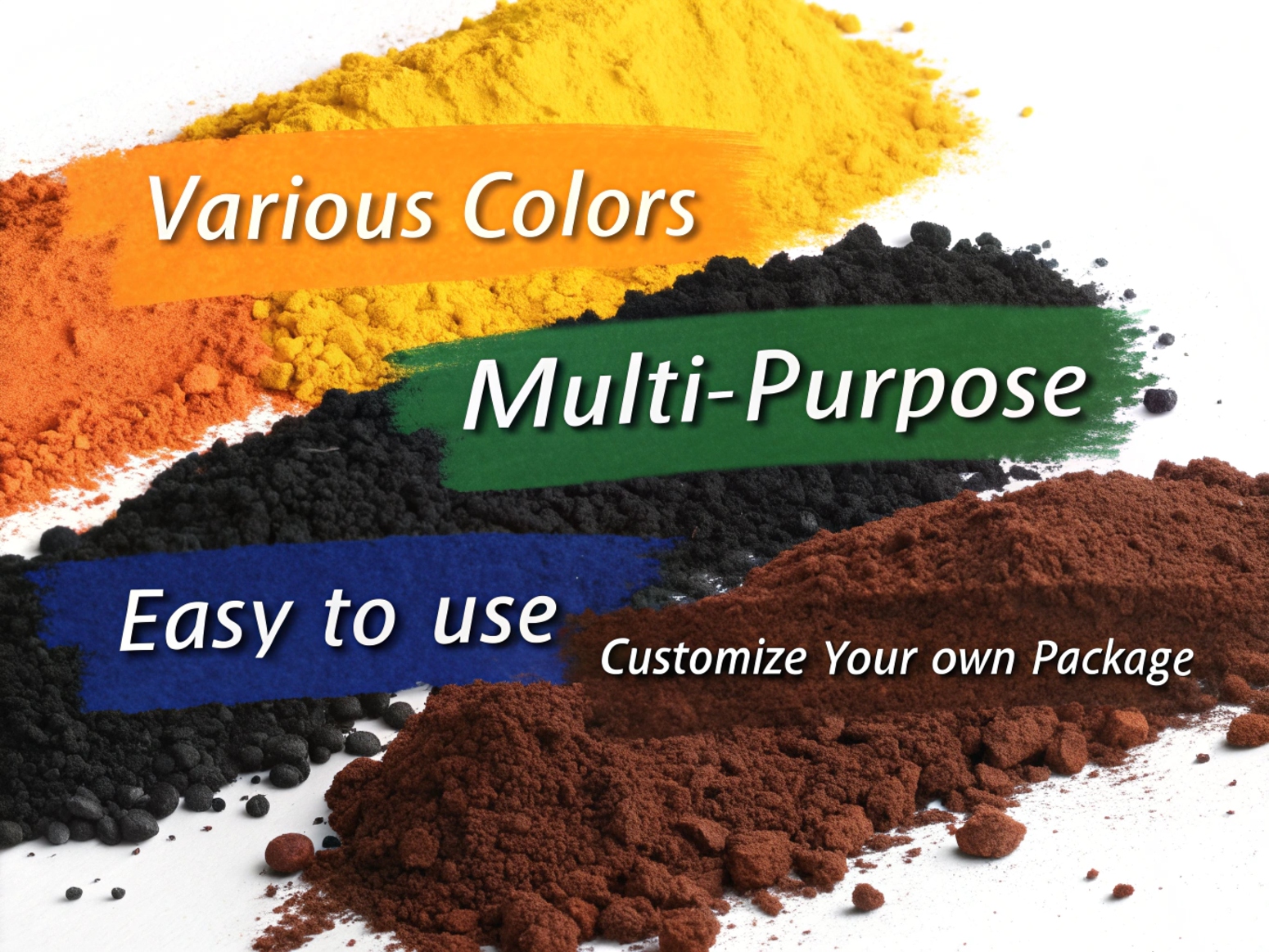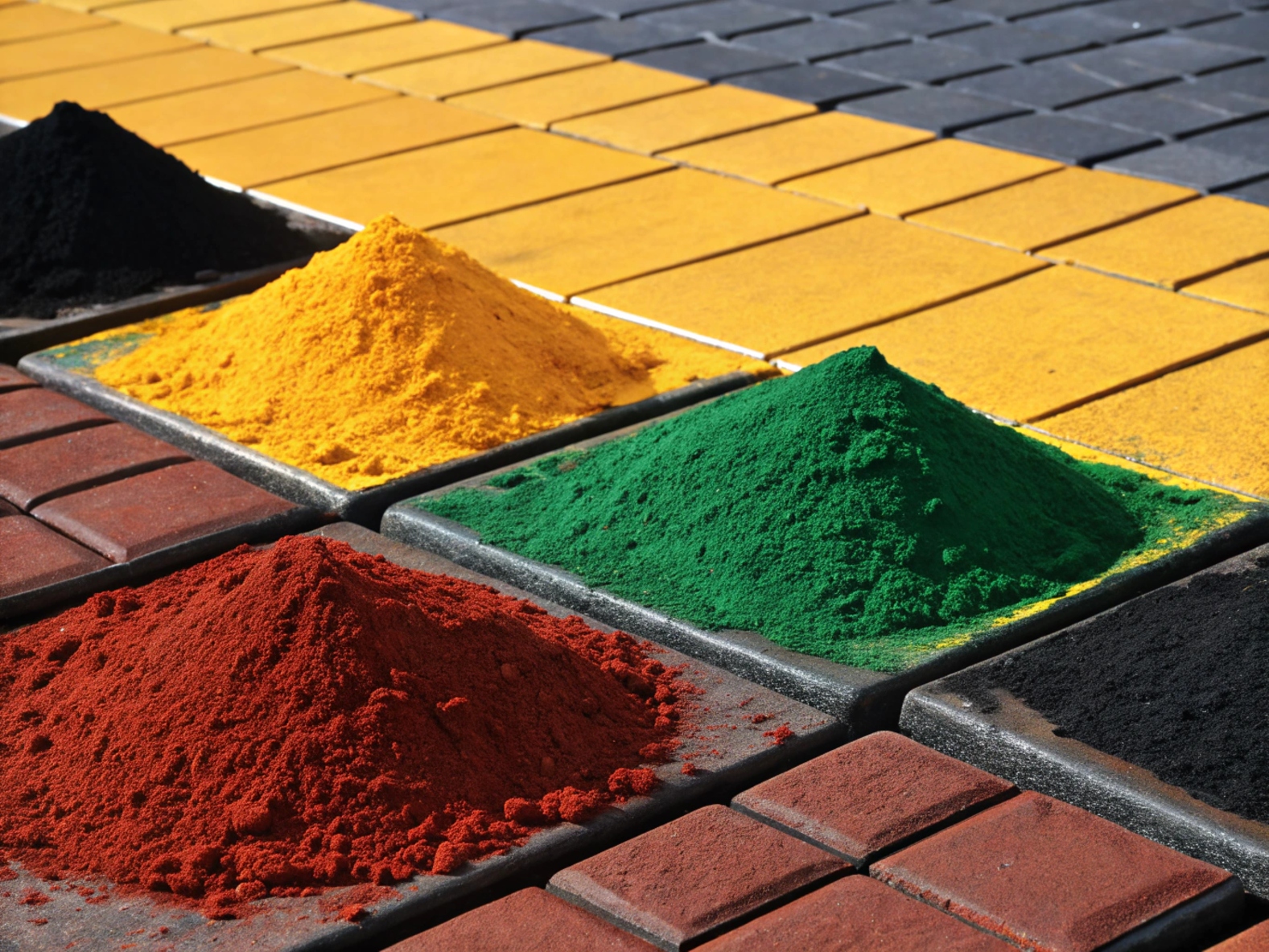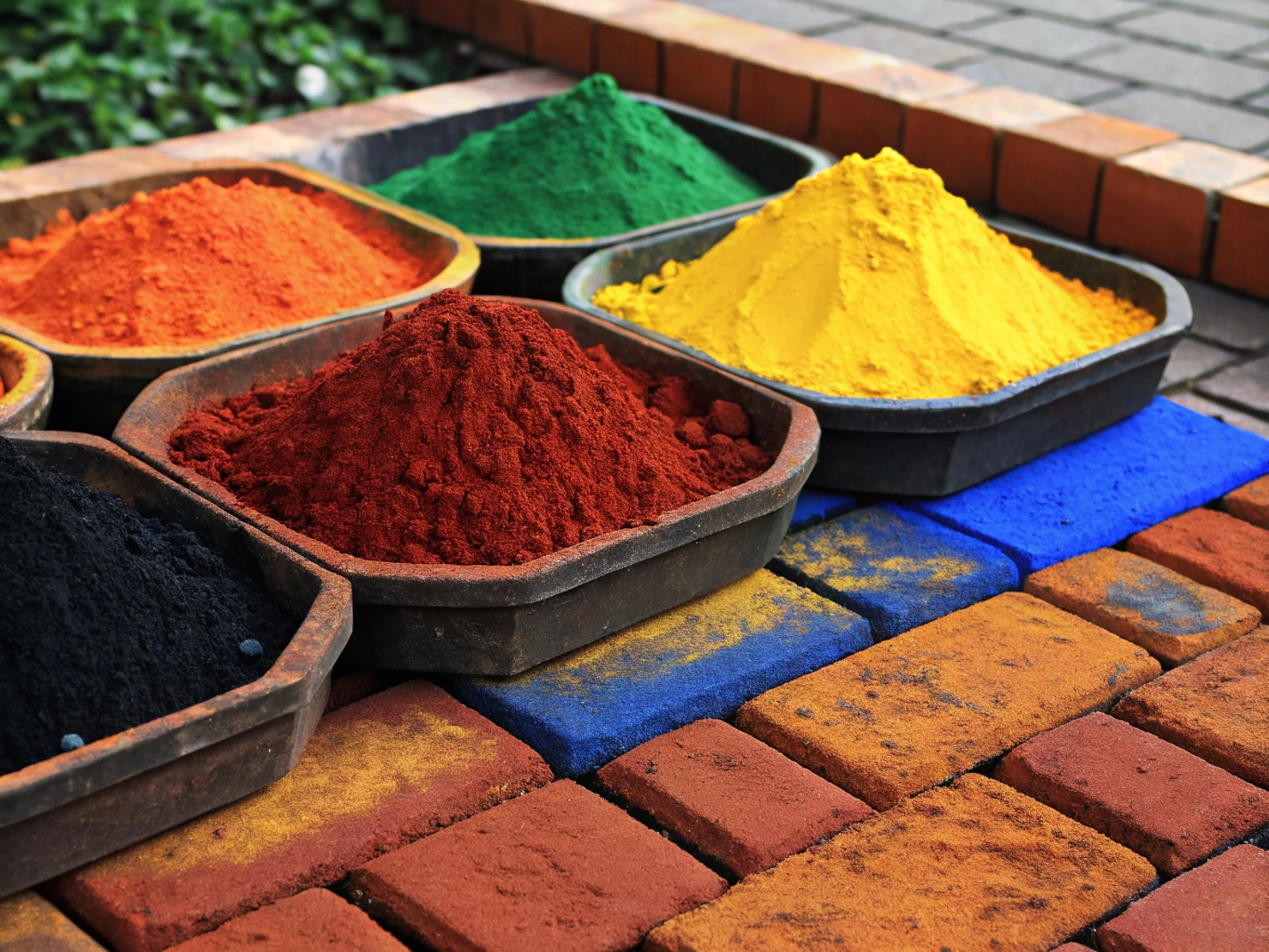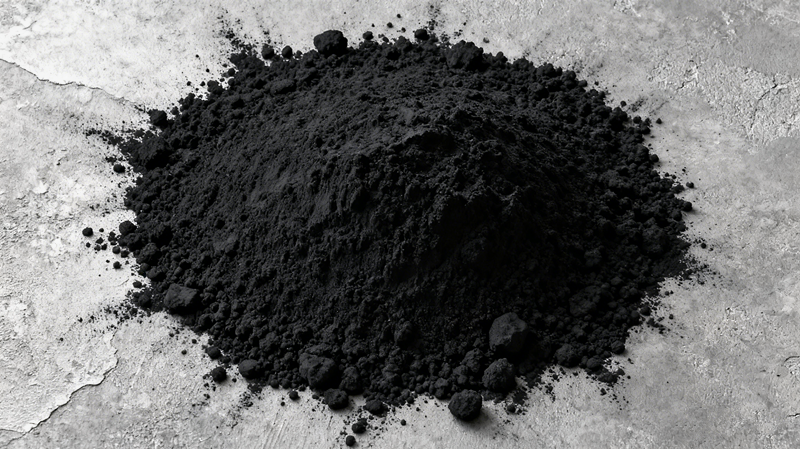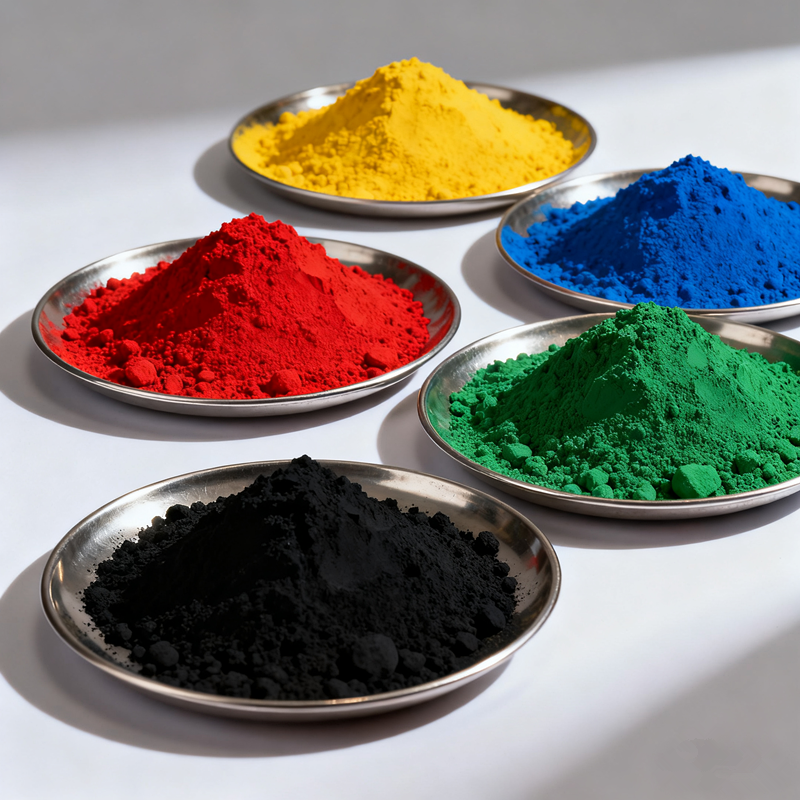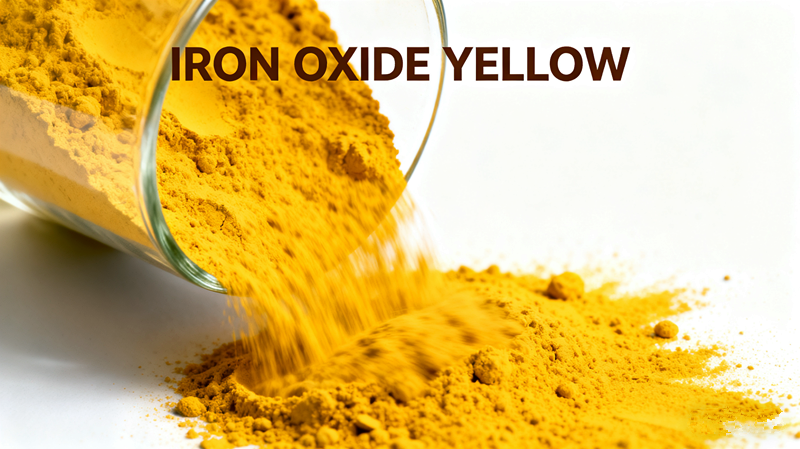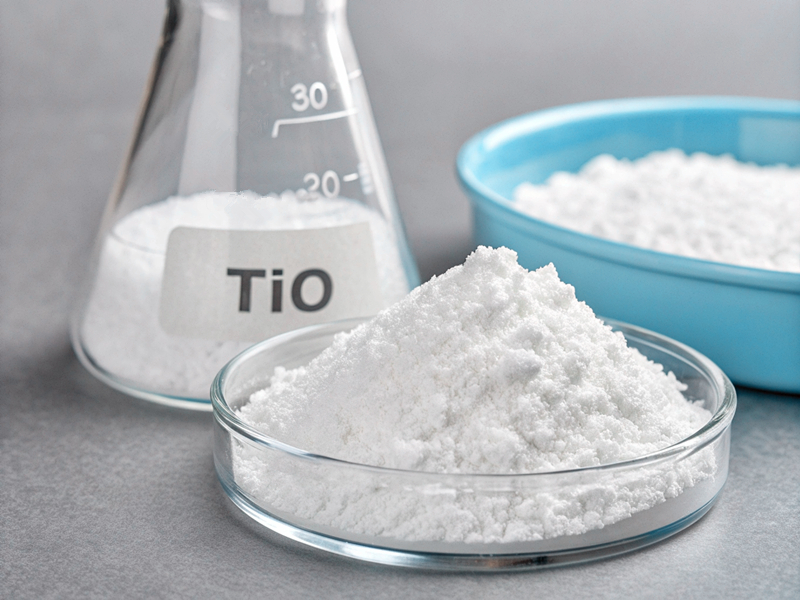When adding color to cement, the ratio of iron oxide pigment1 matters more than you think. Too little, and the color fades. Too much, and performance suffers.
The ideal ratio of iron oxide pigment2 in cement products usually ranges from 1% to 10% of the total weight of cement, depending on the desired intensity and product type.
Choosing the right pigment ratio not only affects the color but also the final product quality. Let's explore how to get it right and avoid costly mistakes.
What is the best pigment-to-cement ratio?
Using the wrong pigment ratio can cause uneven coloring, poor durability, or even higher costs. Many beginners either overdose the pigment or underuse it.
A 3% to 5% iron oxide pigment ratio works best for most colored cement products3. This range gives rich color without weakening the cement structure.
This ratio applies to iron oxide red, yellow, and black pigments. It also ensures cost efficiency and consistency.
Recommended ratios based on product type:
| Cement Product | Ideal Pigment Ratio |
|---|---|
| Concrete bricks | 3% – 6% |
| Paving blocks | 2% – 5% |
| Roof tiles | 4% – 7% |
| Plastering mortar | 1% – 3% |
These are general ranges. Always test with your own cement mix before final production.
Key things to consider:
- Base cement color: White cement shows pigment more vividly than gray.
- Mixing method: Dry-mix pigments into cement before adding water.
- Pigment quality: Use high-dispersion pigments4 for even tone.
- Batch consistency: Weigh pigment accurately for each mix.
Consistent mixing methods ensure no streaks or blotches. In my factory, we use automatic weighing systems to maintain batch consistency. This helps our clients, especially brick makers, keep color stable from batch to batch.
What happens if the pigment ratio is too high or too low?
Overuse and underuse of pigment can cause more problems than you think. Some customers want a deep color, so they use more pigment without knowing the impact.
Too much pigment can reduce cement strength, delay curing, or even cause surface cracking. Too little, and the color looks pale and fades quickly.
For example, one of our Chilean clients once increased pigment to 12% hoping for a darker tone. The final bricks cracked under pressure, and color variation was severe. He learned that more isn’t always better.
Here’s what can go wrong:
If ratio is too high:
- Cement loses strength
- Longer drying time
- Waste of pigment, higher cost
- Risk of efflorescence
If ratio is too low:
- Faded, uneven color
- Poor UV resistance
- More maintenance needed
- Weak market appeal
Balancing performance and color is key. In my experience, pigment quality and accurate dosing matter more than using large amounts. We always guide our buyers to test with small batches before full-scale production.
Conclusion
The pigment-to-cement ratio directly impacts the look, strength, and durability of cement products. A balanced range of 3%–5% iron oxide pigment1 offers reliable results for most needs. Use high-quality pigment, follow proper mixing steps, and always test before scaling. At XT, we help clients worldwide, from Africa to South America, find the right ratio for their specific application. That’s how we bring color pigment, color life to every project.
At XT, we don’t just supply iron oxide pigment5s—we support your production goals from start to finish. With our factory-direct supply, strict batch control, and customizable packaging, we help customers in Chile, Africa, and beyond get consistent color with every shipment. That’s how we bring color pigment, color life into every block, tile, or pavement you make.
If you’re unsure about pigment ratios or facing color consistency issues6, feel free to reach out. Let’s build better, more colorful cement products together.
-
Understanding the role of iron oxide pigment can help you achieve the perfect color and quality in your cement products. ↩ ↩
-
Learning about the ideal ratio can prevent costly mistakes and ensure the desired color intensity in your projects. ↩
-
Choosing the right colored cement products can enhance aesthetics and durability in construction. Discover valuable tips and recommendations here. ↩
-
Learn about high-dispersion pigments and how they contribute to achieving an even tone in cement mixtures. ↩
-
Explore the advantages of iron oxide pigments for enhancing the quality and durability of cement products. ↩
-
Learn effective strategies to resolve color consistency issues and improve your cement product quality. ↩


